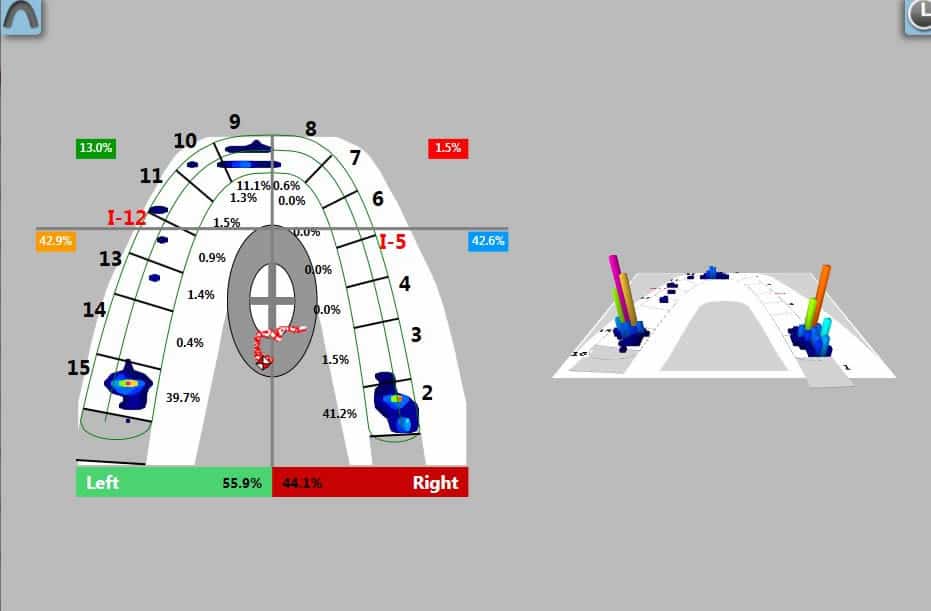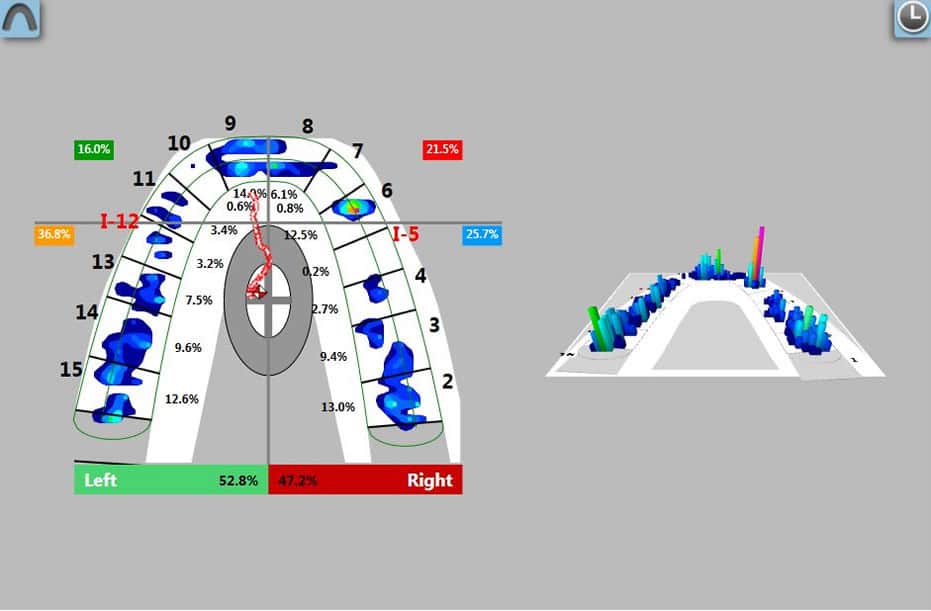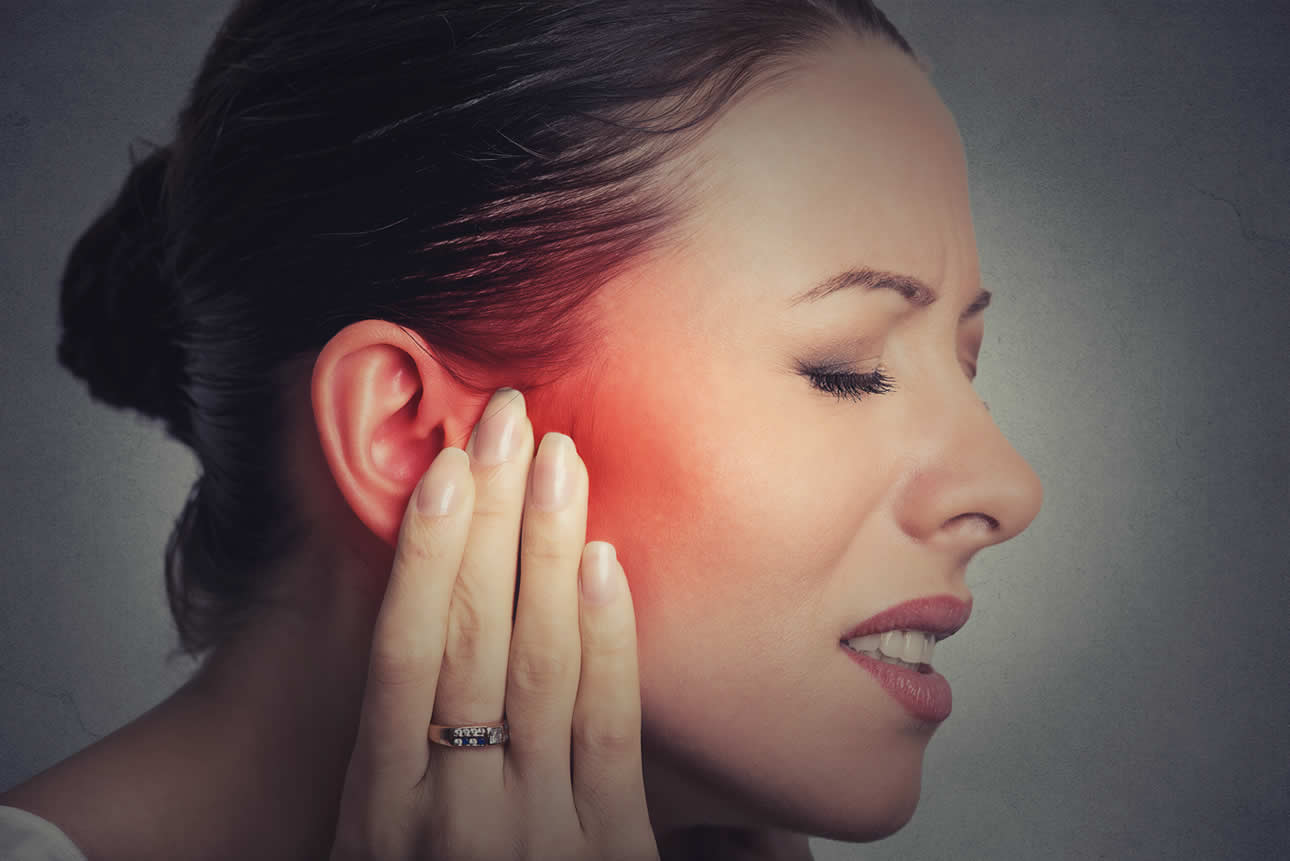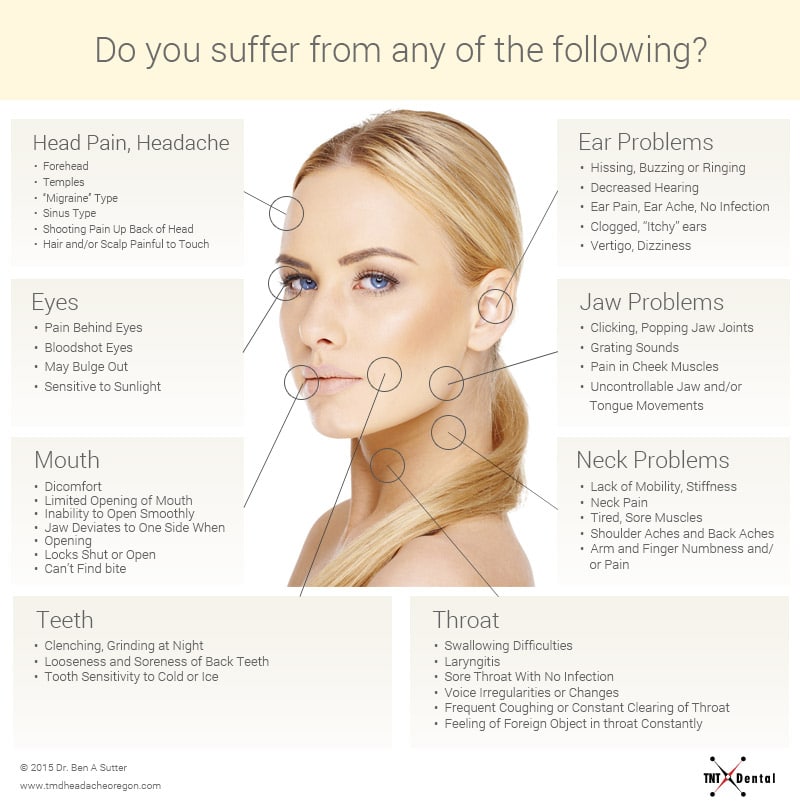TMJ & TMD Treatment in Brunswick, Maine
What is Temporomandibular Joint Disorder?
Temporomandibular joint disorder, also known as TMD or TMJ, refers to a group of disorders that stem from problems with the jaw, jaw joint, or facial muscles involved in jaw movement. This disorder can cause constant or intermittent discomfort and pain in the areas connected to the jaw. These disorders are often incorrectly referred to as TMJ, which refers only to the temporomandibular joint itself.
The temporomandibular joint is a small joint in front of the ear where the skull meets the lower jaw. This joint is one of the most frequently used joints and enables the jaw to move and function including talking, yawning, chewing and swallowing. For the temporomandibular joint to function properly, all of the muscles, ligaments, and bones involved in its movement must be working properly. Conditions that prevent them it doing so may cause temporomandibular joint disorder.
What is Myogenous TMD/TMJ?
Demographic analyses show that over 15 million Americans suffer from some form of bite disorder. Myogenous TMD/TMJ, or muscle-based bite disorders, are caused by excessive jaw muscle contractions and the related diseases these muscles cause. When overused jaw muscles are in spasm and not getting enough oxygen. This can result in the shortening of muscles, lactic acid buildup, and tense muscles. Tense muscles pull the jaw into abnormal positions which creates abnormal pressure on the head and imbalance.
the Causes TMJ Disorder
TMJ disorder is a common problem affecting millions of people. The chronic pain and symptoms of TMJ disorder result from a disturbance in the mechanics of the jaw. Research suggests that this disturbance may be influenced by several factors. TMJ disorder may occur spontaneously or be a symptom of a more complex problem. It is believed that more than one factor is usually responsible for dysfunction in the temporomandibular joint. These may include:
- A condition such as arthritis
- Injury to the jaw area
- Micro traumas such as grinding and clenching the jaw (bruxism)
- Overuse from a habit such as gum-chewing
- Dental procedures that require the mouth to be open for a prolonged period
- Infection
- Autoimmune conditions that prompt the immune cells to attack healthy tissue
Some studies indicate that a particular genetic variant that increases pain sensitivity is often found in people with TMJ disorder. Furthermore, research suggests that various environmental and hormonal factors may contribute to this problem.
What Are The Symptoms of TMJ?
TMJ disorders are often ignored or go untreated in dentistry and medicine. Interestingly, many head symptoms caused by TMJ are often misdiagnosed and misunderstood. Jaw or neck pain, chronic headaches, migraines, ear symptoms such as vertigo and tinnitus are a few of these symptoms. These symptoms are treatable with disclusion time reduction, a treatment that uses sophisticated software to guide an adjustment of your bite. Patients may demonstrate several different symptoms when the muscles and joints of the jaw are under extreme stress. These include:
- Known grinding or clenching of teeth
- Waking up with muscle soreness or stiffness in the jaw, face, neck, or head
- Frequent neck pain or headaches
- Worsening pain when clenching the jaw
- Pain when opening the mouth to yawn, eat, etc.
- Previous injury to the jaw, head, or neck
- Teeth do not touch when biting down
- Teeth meet differently now and then
- Difficulty using front teeth to bite or break food
- Some teeth are worn, broken, or sensitive
Scientists have discovered that many patients with TMJ disorder also experience pain in other areas of the body. These are referred to as comorbid conditions because they occur together too frequently to be attributed to chance. Some of the painful conditions that research has linked to TMJ disorder include chronic fatigue syndrome, fibromyalgia, low back pain, endometriosis, chronic headaches and migraines, and sleep disorders.
TMD Treatment
Various remedies and therapies are used to improve the function of the jaw. A thorough evaluation is necessary to accurately diagnose TMJ disorder. Initially, the objective of care is often to relieve joint pain and muscle spasms in the jaw and surrounding areas. This may be achieved with a combination of conservative therapies such as:
- Resting the jaw
- Eating soft foods
- Avoiding gum-chewing
- Taking a pain reliever, muscle-relaxant, or anti-inflammatory medication
- Applying ice and heat to the jaw area
- Practicing good posture
Clinical treatments that may be used to improve TMJ disorder include physical therapy, biofeedback, and stress management techniques. A night guard may be made to reduce the force of clenching and grinding. Oral appliances have also been devised to reposition the jaw to reduce muscle tension. These remedies and treatments may be applicable in some cases, but not all. Accuracy in diagnostic testing is critical to formulating a successful TMD treatment plan.
Dr. Oshetski offers a new computer-guided TMD or TMJ pain treatment that has been proven to be a faster and more predictable solution to TMJ symptoms than conventional mouthguard and appliance-based treatment. Dr. Oshetski underwent this treatment himself and is so amazed at the results that he mastered the technique for his patients. To date, Dr. Oshetski is one of a few dentists nationally that provide this therapy. Overall, we are extremely excited as patient results surpass any other muscle-based TMJ treatment.
What is Disclusion Time Reduction?
Disclusion time reduction, or DTR, is a treatment that utilizes a sophisticated bite sensor and muscle sensors to measure and analyze the bite. The analysis determines the amount of time a patient’s back teeth are engaged in a chewing or grinding function. Published studies reveal that if this time factor is prolonged, back teeth can create very high levels of muscle contractions in a patients jaw, face, head, and neck. By shortening the amount of engagement time, Dr. Oshetski can reduce the muscle contractions and alleviate pain.
Prior to the development of disclusion time reduction treatment, patients with bite problems wore cumbersome and unattractive mouth acrylic splints. These plastic bite guards interfered with their daily lives, however, was the only solution available. Since the development of modern computerized treatment, many patients no longer need to depend upon mouth splints, nor do they need to see numerous medical practitioners. Most importantly, the patients do not have to live with their pain.
What Causes a Bite Disorder?
When the natural function of protecting the canines, or “eye teeth” are not engaged this results in the molar teeth being able to grind together and cause significantly higher muscle firings and related symptoms. The most common causes of this unnatural function are new crowns or fillings that were not properly adjusted when placed, orthodontics, and teeth adjustments that were made without digital technology. After treatment, when the canines are properly engaged and the back teeth fit together, the body disables the excessive firing to the muscles.
Symptoms of a Bite Disorder
The upper and lower jaw are designed to fit together. However, this is not always achieved naturally.In many cases, a bad bite is the result of developmental problems. The jaws do not grow in unison. What studies have found is that a bad bite may also be the result of dental restorations and treatments. Most dentists take great care in crafting well-fitting crowns, bridges, and fillings. However, without advanced technology, there is a margin of error that could result in unnatural strain and stress on the jaw when biting down or even when the jaw is in a resting position.
It is necessary to identify a bad bite because this problem can lead to secondary issues. TMJ disorder is one of the common symptoms of a bad bite. Additional symptoms may include:
- Headaches
- Tooth pain
- Previous root canals due to severe tooth pain
- Nerve death in a tooth or teeth
- Tooth loss
- Noticeable wear on a tooth, teeth, or restorations
- Chips, cracks, or fractures in teeth
- Misaligned or crowded teeth
- Muscle spasms in the upper neck or jaw
- Sore jaw muscles
- Gum recession
These are a few symptoms that may indicate a bad bite. However, just as there can be many causes of a bad bite, there may be numerous symptoms. If you have reason to believe you may have a bad bite, schedule a consultation with Dr. Oshetski.
Advantages of DTR Treatments
Disclusion time reduction treatment is the only measurable or objective evaluation of how your bite affects your muscles and influences your symptoms. It differs from other bite adjustments or equilibrations in its high accuracy, which improves the bite and alleviates symptoms. Other bite evaluations, including bite papers, are not reliable which often leads to adjustments on the wrong spots of the teeth.
Disclusion Time Reduction Therapy (DTR) is a precise method of treatment that achieves:
- A high degree of accuracy
- Precision measurements using Bio-EMG technology
- Minimal treatment times
- No “guesswork” for the dentist
The guesswork that may be present in traditional therapies is eliminated in DTR thanks to the use of a computer-guided diagnostic system. Conventional therapies such as mouthguards are effective only when worn. Once the mouthguard is no longer used, symptoms return. Using T-scan Bio-EMG technology, a dentist who performs DTR obtains an accurate diagnosis of bite disorders and jaw dysfunction, leading to the effective resolution of symptoms.
How Do DTR Treatments Help Migraines?
Many factors influence migraine headaches. However, if a migraine patient is a candidate for DTR and adjusted, the frequency and severity of migraines typically lessen. This allows for less medication, hospitalization and lost days. Some migraine patients have even reported a complete resolution. Migraine patients should all consider having an expert evaluate their bite with DTR, such as Dr. Oshetski.
In DTR therapy, the dentist makes minor adjustments to the surface of teeth to optimize the contact between the upper and lower jaws. These adjustments even out the bite exactly where refinement is needed to address stress and the pain it causes. The stressed muscles in the jaw are not isolated; they attach to muscles in the neck and head. By restoring proper fit and function to the jaw and its muscles, DTR reduces the strain on all attached muscles. It is in this way that DTR can help migraines and chronic headaches.
The Disclusion Time Reduction Procedure
First, patients will bite down on the bite pressure sensor. The sensor results display on the computer and show Dr. Oshetski exactly where the teeth or restorations are coming together in a way that is not ideal. He then makes very minimal adjustments guided by the computerized bite pressure sensor results. While Dr. Oshetski makes adjustments, he monitors the bite along with EMGs that will measure the activity of the muscles in the jaw. Patients will typically receive treatment during 3 to 4 appointments spaced out over 6 weeks.
Results of DTR
After your first treatment, symptoms begin to subside. After a full series of DTR adjustments, your bite will no longer experience strain by excessive and extended clenching and grinding. A patient’s bite now has a protective or inhibitory mechanism and does not have the tendency to clench.
Studies show that when performed properly, DTR provides a patient with a much more comfortable life where most patients no longer need splints, soft food diets, chiropractors, and physical therapists. Additionally, and most importantly, the use of long-term medication, previously used for pain relief, was cut by over 90%.
DTR Patient Testimonial

Exceptional service and staff!
“On my first visit, Dr. Oshetski gave me an explanation and a solution for the dental pain I had been experiencing for years. After following a treatment plan using DTR to adjust my bite, crown replacement, and placement of an implant, I am happy to say I am now pain free! My crowns are a perfect match, I can eat all of my favorite foods, and I am no longer sleeping with a mouthguard. Dr. Oshetski and his staff are the best! They are all kind, caring professionals and will go out of their way to make your visit a pleasant one!”

Donna’s Bite Before DTR

Donna’s Bite After DTR
What are the Side Effects of Disclusion Time Reduction Treatments?
Most often, a side effect of disclusion time reduction includes adjustments of existing restorations. Additionally, Dr. Oshetski may need to replace restorations that he cannot simply adjust. Since the restorations cause the TMD and TMJ symptoms and these symptoms resolve after treatment, most patients prefer this replacement than living with chronic discomfort.
Schedule a Consultation
If you are experiencing frequent headaches, habitual grinding or clenching of teeth, or jaw pain, call our Brunswick office phone number to schedule a consultation with Dr. James Oshetski.



